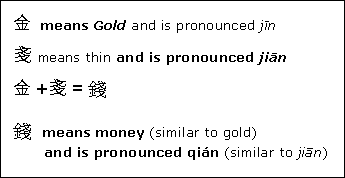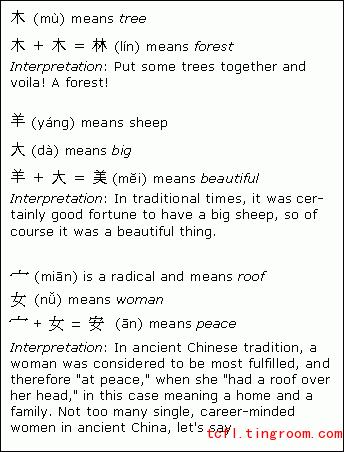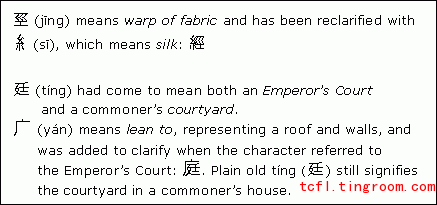Principle 4 - The Sound-plus-Meaning Compound Character
Two characters join to create a new one. One character influences the sound of the word; the other influences its meaning.
Again, over time, some of these sound influences have blurred a bit, but they're usually pretty close.
Most characters in use today are these sound-plus-meaning compounds, or "pictophonics."

Principle 5 - The Meaning-plus-Meaning Compound Character
Here the interaction of the meanings of two characters combined produces the meaning of the new character.

Principle 6 - The Reclarified Compound Character
When one written form had come to represent various meanings or spoken words, scholars would sometimes "reclarify" one of the meanings by adding some new part to show they meant one thing by writing the character and not another.

In the "clock" and "tree/forest/full of trees" examples, you may have noticed that as characters are added together, each one has to take up less space than if it were standing alone. This is because each Chinese character, no matter how many sub-elements it contains, must take up about the same amount of space as any other character.
In other words, each one must be written in a box that is no larger and no smaller than boxes for other characters.
Notice again how the character for “field,” (tián), shrinks as it is added together with other elements in new characters, so that each character “fits in the box."
(tián), shrinks as it is added together with other elements in new characters, so that each character “fits in the box."

In other words, each one must be written in a box that is no larger and no smaller than boxes for other characters.
Notice again how the character for “field,”




